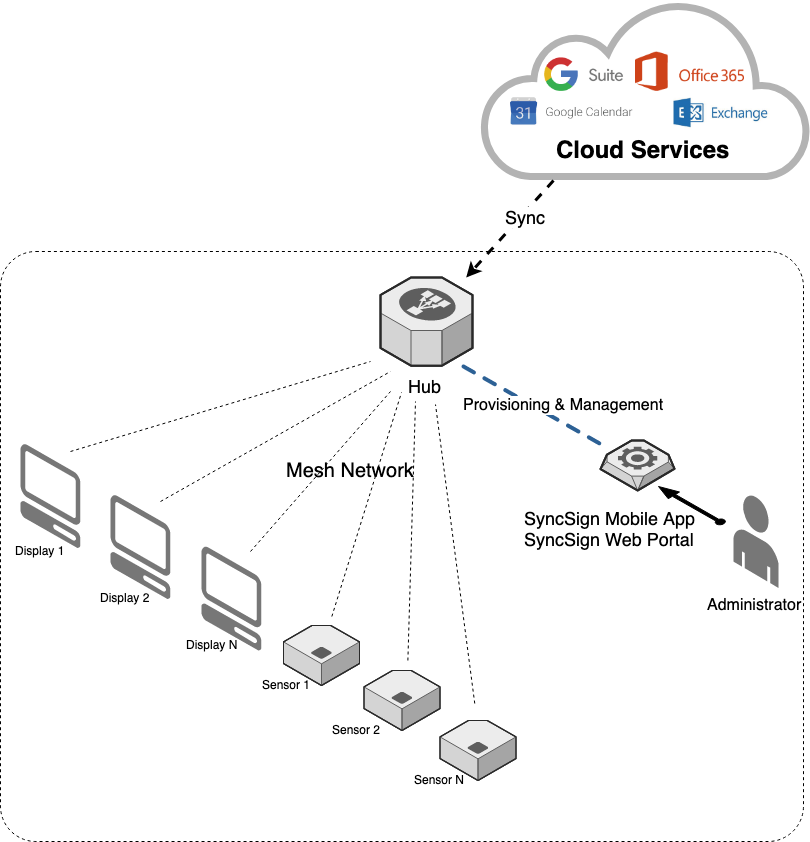Concepts to Understand¶
How it Works¶
System Diagram¶
The system has several blocks. Hub is the joint point that manages all displays and connects to web services.

Main Building Blocks¶
Hub¶
A Hub manages up to 16 Displays. It connects to the Internet via Ethernet or Wi-Fi.
The Hub creates a mesh network. It’s a low power wireless technology that links all displays together and maintains real-time communication.
The Hub decides all information shows on the Display. Whenever the Hub wants to update a Display, it pushes the notification to it.
Display¶
The Display is a ‘dummy monitor’, receives the notification from the Hub, and updates the e-ink screen. It’s designed to show the static image or texts. The refresh rate of e-ink is very slow, so we cannot use it to play video clips.
Personal Area Network (PAN)¶
The Hub creates the mesh network, then all Displays and Range Extenders can join this secure network, as known as Personal Area Network (PAN). Before a new Display joins the network, the Hub must enter the ‘Pairing Mode’. Then on the Display, use a paper clip to trigger the pairing.
Compare to Wi-Fi wireless technology, this PAN network consumes much less power - only 1/1000 of the Wi-Fi, while keeping the constant connection with uplink device (the Hub).
Meanwhile, mesh networking is a powerful way to route data. This methodology extends range capabilities by allowing data to hop from node to node. Mesh networking also increases reliability through “self-healing”, which is the ability to create alternate paths when one node fails, or a connection is lost. The Range Extenders will act as the ‘hop’ and relay the data to further distance.
However, this PAN is specifically designed for low-data rate, low-power applications. So it’s quite slow for the transmission of video, image, or large files. The typical total data payload is less than 10KB.
Battery Life¶
Please note this Display is designed to run for an ultra-long period on the battery. The e-ink screen consumes almost zero power when showing static information. Even without a battery, the screen will still last for months. Whenever refreshing the screen, it will consume a little power.
Besides the screen updates, another power consumption is the wireless transmission. The more data to transmit or receive, the longer time it takes, and the more power needed.
The built-in battery allows up to 12000 times of screen-updates without the data transmission or 3-year online standby without screen update. In practical, We assume it refreshes 8000 times in one year as the compromised result of battery life.
If you need to update the Display frequently, you will notice a significantly shorter life.
Some measures must be taken to reduce transmission. For example, you can transmit a logo image to the Display during an update, however doing this way every time is time-consuming and power-consuming. There is non-volatile storage (will not get lost after reboot or power failure) on the Display, and we can use it to save images that might reuse in advance. Then load them from local storage when refreshing the screen.